Clear skies and sunshine greeted the Golden Shadow this morning as drowsy research team members congregated over breakfast. The conversation soon turned to the storm gathering and organizing in the southeastern Caribbean. Many onboard wondered if the approaching tropical storm might interfere with the plan to start steaming for the Inaguas; a course that would point us directly into the path of newly formed Tropical Storm Emily.
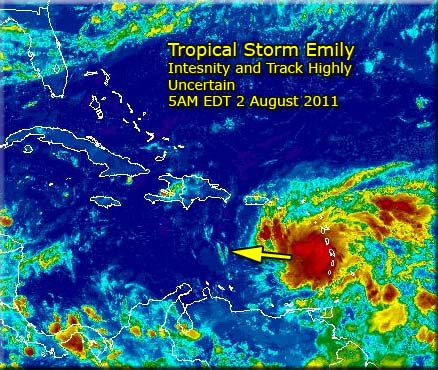
Sure enough, after everyone on board participated in a required safety drill, a briefing from the ship’s Captain made it clear that the original plan to head southeast towards the Inaguas was no longer an option. Tropical Storm Emily was projected to track northwest along the Bahamian island chain. We were faced with weighing all the possible ways for avoiding Tropical Storm Emily to keep the ship safe, while minimizing delays to our research.
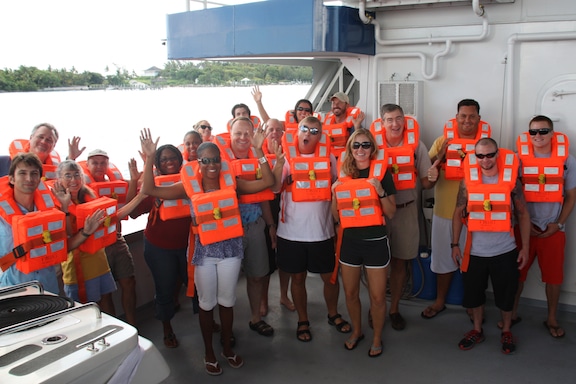
The following four options and map roughly outline our choices for avoiding Tropical Storm Emily. If you were Captain of the Golden Shadow, what would you do? Consider the following alternatives:
Option 1: Head North
One possibility for avoiding Tropical Storm Emily is seeking shelter in a port like Miami or Cape Canaveral along Florida’s east coast. An obvious disadvantage to this option is that the ship would be moving in the same direction as the storm and might still be in the storm’s track several days from now. In addition, the ship would be moving away from our study site in the Inaguas.
Option 2: Head West
The Golden Shadow could move into the Gulf of Mexico, thereby avoiding Tropical Storm Emily. This option moves us safely out of the storm’s track, but has the disadvantage of moving us away from our study site.
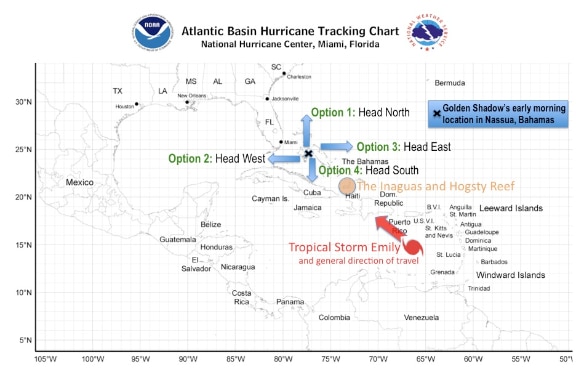
Option 3: Head East
If the ship sails east into the open waters of the Atlantic Ocean and the storm curves more north and east than forecasted, we might encounter an area of the storm known as the dangerous semicircle. In the northern hemisphere, tropical storm and hurricane force winds located to the right of a storm are strongest. This is because momentum from the storm’s track and the storm’s wind speed are compounded.
Option 4: Head South
One benefit to steaming south is that we would be heading in the general direction of the Inaguas so that once Emily clears out of the area, the ship could turn to the east and reach the islands before too long. However, if the ship were to sail due south, she would eventually reach Cuba and could risk being in the storm’s path without a clear way to hide from the strong winds and waves that Emily will surely bring.
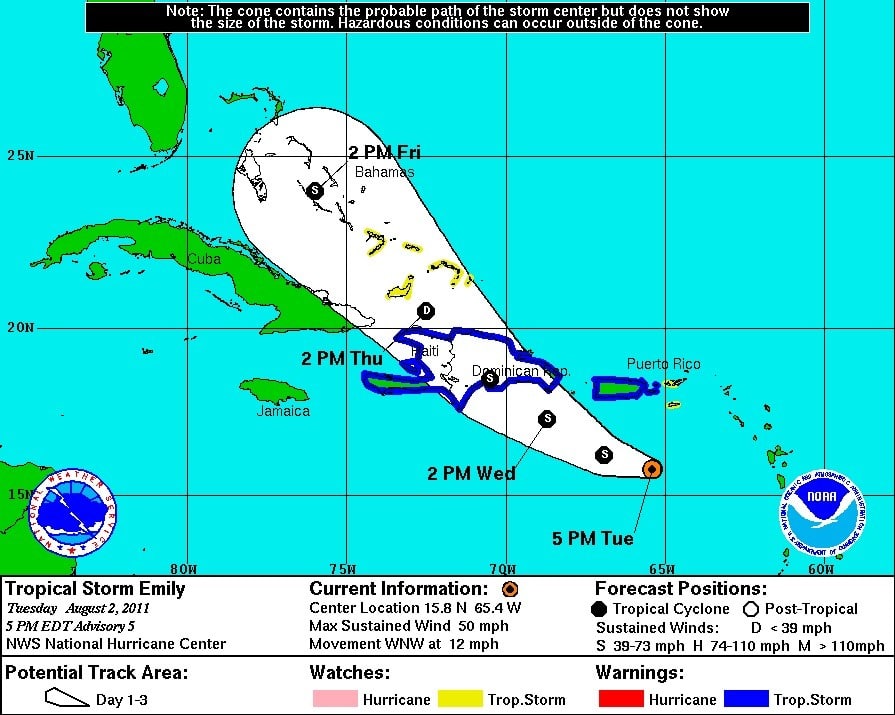
And so, after giving the Captain some of our ideas about ways to minimize the delay in starting our research, the Golden Shadow left the cruise ship dock in Nassau passing by the oldest lighthouse on the island. The team meanwhile huddled in the staff mess room waiting to hear what the Captain had decided to do.
Which option do you think he decided on?
To be continued…
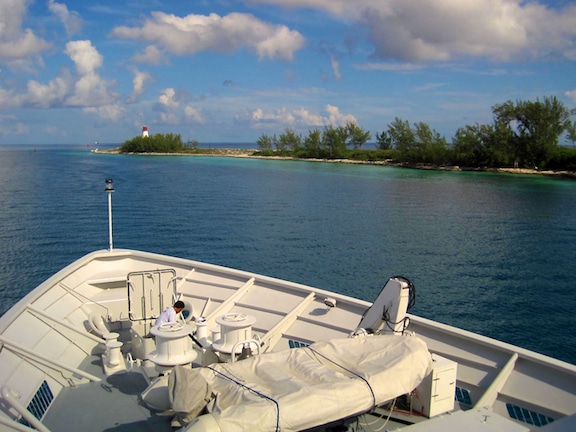
Written by Kit van Wagner
(Photo/Images by: 1 Central Florida Hurricane Center (flhurricane.com); 2 – 4 Kit van Wagner)
To follow along and see more photos, please visit us on Facebook! You can also follow the expedition on our Global Reef Expedition page, where there is more information about our research and our team members.